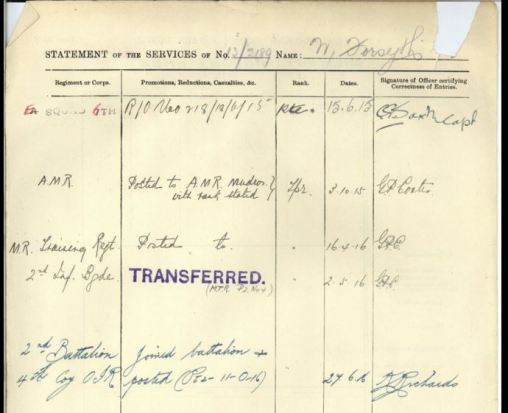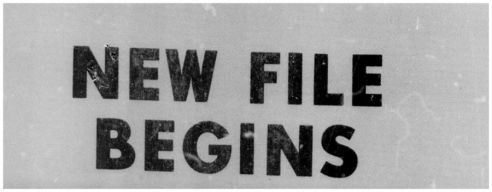Today I received a hint from familysearch.org about a possible record for John Yule FARQUHAR.
The record was his obituary from Bucyrus, Ohio, USA in 1935
John was a brother of my great-great-grandmother, Jannet "Jessie" Forsyth nee Farquhar who emigrated to New Zealand with her husband Robert and eldest son Alexander Farquhar Forsyth.
Jessie pre-deceased her brother in 1923.
Their mother, Margaret nee Yule had died in Scotland in 1907.
 |
Scotland, National Probate Index (Calendar of Confirmations and Inventories), 1876-1936
|
Click on the above images to make them more readable
 |
| Image from "Ohio, Crawford County Obituaries, 1860-2004." Database with images. FamilySearch. http://FamilySearch.org : 25 June 2018. Crawford County Chapter of the Ohio Genealogical Society, Bucyrus. |
A noticeable error in the index is sister Mrs Gene Prett (sic) is actually Mrs Jean PRATT.
 |
| Image from Image from "Ohio, Crawford County Obituaries, 1860-2004." Database with images. FamilySearch. http://FamilySearch.org : 25 June 2018. Crawford County Chapter of the Ohio Genealogical Society, Bucyrus. |
Transcription
Bucyrus, April 20 - Funeral services will be held at the Wise Funeral Home at 2 o'clock Monday afternoon for John Yule Farquhar, 79, Bucyrus druggist for more than 50 years, who died at his home, 301 South Spring Street Friday. The Rev. David N. Roller, pastor of First Presbyterian Church, of which the deceased was a member, will conduct the service. The body will be placed in the Bucyrus mausoleum.
Mr. Farquhar had been ill only two days. Death was due to a complication of diseases.
Mr. Farquhar was born in Scotland and received his education there. In 1877, he came to America and in 1883 located in Bucyrus with his wife Emma Shannon Farquhar and established the Farquhar Pharmacy which has remained in business since. Mr. Farquhar was one of the few remaining members of the "55" year club which was formed 30 years ago by a group of men whose birthdays occurred in 1855. He was also a member of the Fifty Year Club an organization of Bucyrus men who have been in the same business for 50 years.
Survivors are the widow; two sons, Ivan Farquhar of New Hartford, New York, and Captain Allan Farquhar of Vallejo, Calif.; one brother, William, who was associated with him in the drug store since its founding, and two sisters, Mrs Helen McRobbie of Hastings, New Zealand, and Mrs. Jean Pratt of Aberdeenshire, Scotland.
On going through my files later I found that I had a copy of an obituary for John.
Trancription
John Farquhar, Prominent Bucyrus Druggist, Dies.
John Yule Farquhar, 79, prominent Bucyrus businessman for more than a half century, died at 7 o'clock this morning at his home, 301 South Spring street.
Although he had been in ill health for some time, his illness did not become serious until the first part of this week and he had been bedfast for only about two days.
Mr Farquhar was a native of Scotland and was born in Whitcairn, Lonmay, Scotland, on August 15, 1855. At the age of nine years, his parents moved to Quarryburn, Aberdour, Scotland where he received his education.
Fired with a desire to get ahead in the world he left his native Scotland in 1874 when but 19 years old and with two older sisters went to New Zealand, where he remained for three years. In 1877 he came to America and late that year passed through Bucyrus on his way to Turkey City, Pa. He was employed as a drug clerk in Turkey City for three years and in 1880 opened a drug store in Byrom centre, then one of the oil boom cities of Pennsylvania. Here he was married in 1881, on January 1, to Miss Emma Shannon, a sister of Mrs William Farquhar.
He disposed of the drug store late in 1881 and removed to Reynoldsville, Pa., where the drug firm of Farquhar Bros., was formed, his partner being his brother William, a resident of Bucyrus. In 1883 he began casting about for a new location for the firm and Bucyrus was decided on when it was learned that the city had been made a division point for the T. and O. C. railroad and was enjoying a steady growth.
A short time later the store was moved here and it has been one of the substantial business institutions in Bucyrus since that time.
For a short period of three years, from 1912 to 1915, Mr and Mrs Farquhar were in Roanoke, Va., where they were engaged in fruit raising. However they returned to Bucyrus in 1915 and Mr Farquhar again resumed his connection with the firm.
Mr Farquhar was a member of First Presbyterian Church and served for many years as church treasurer and a member of the board of trustees. He was one of the few remaining members of the old "55" club which was formed 30 years ago by a group of Bucyrus men who claim 1855 as the year of their birth. He was also a member of the Fifty Year Club of Bucyrus, composed of a group of men who have been in business here for 50 years.
Surviving are Mrs Farquhar and two sons, Ivan Farquhar of New Hartford, New York and Captain Allan Farquhar of Vallejo, Calif.; his brother William, with whom he was associated in business for so many years; two sisters, Mrs Helen McRobbie of Hastings, New Zealand, and Mrs Jean Pratt of Aberdeenshire, Scotland, and four grandchildren, John and Melville Farquhar, sons of Ivan Farquhar and Ann and Jean, daughters of Captain Farquhar.
Funeral services will be held at the Wise funeral home at 2 o'clock Monday afternoon with Rev. D. N. Roller, pastor of First Presbyterian church conducting the service. The body will be placed in the mausoleum. Friends may call at the funeral home Sunday evening from 7 to 9 o'clock.





































